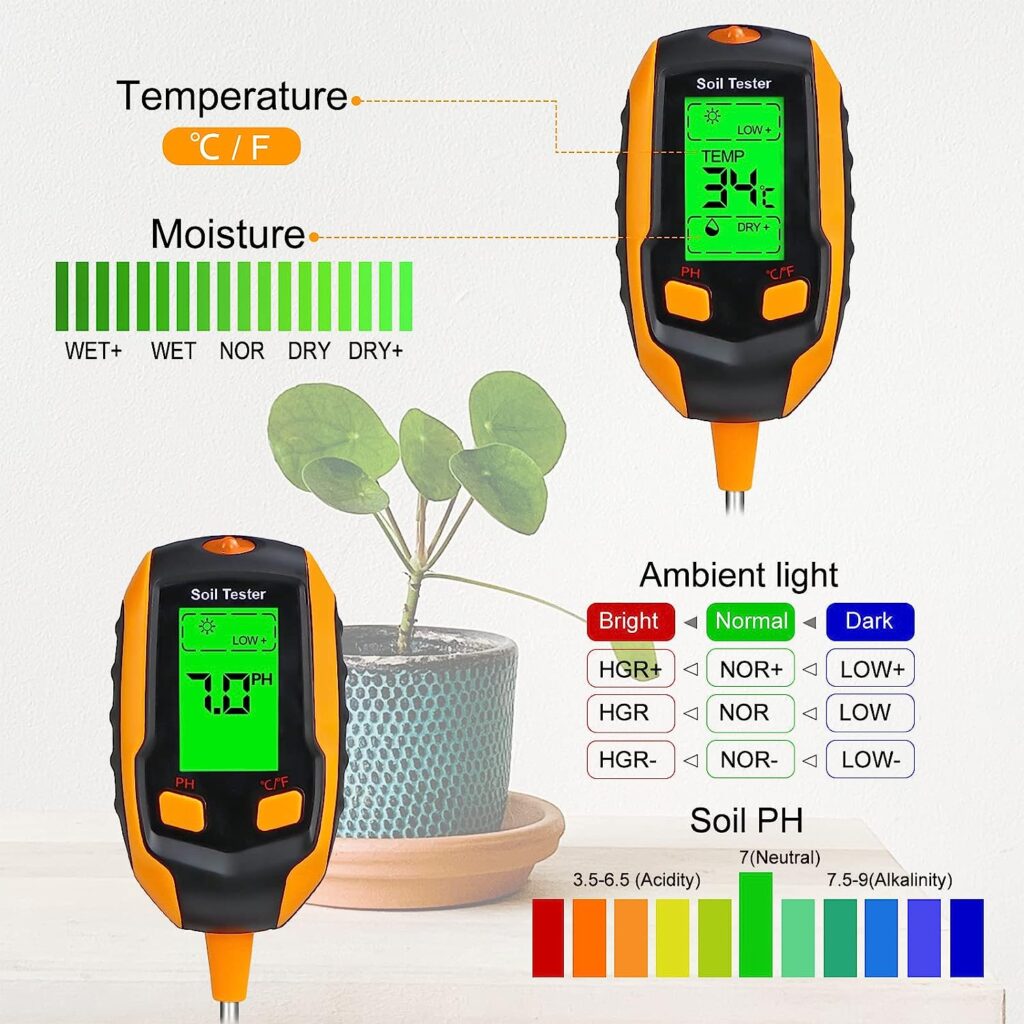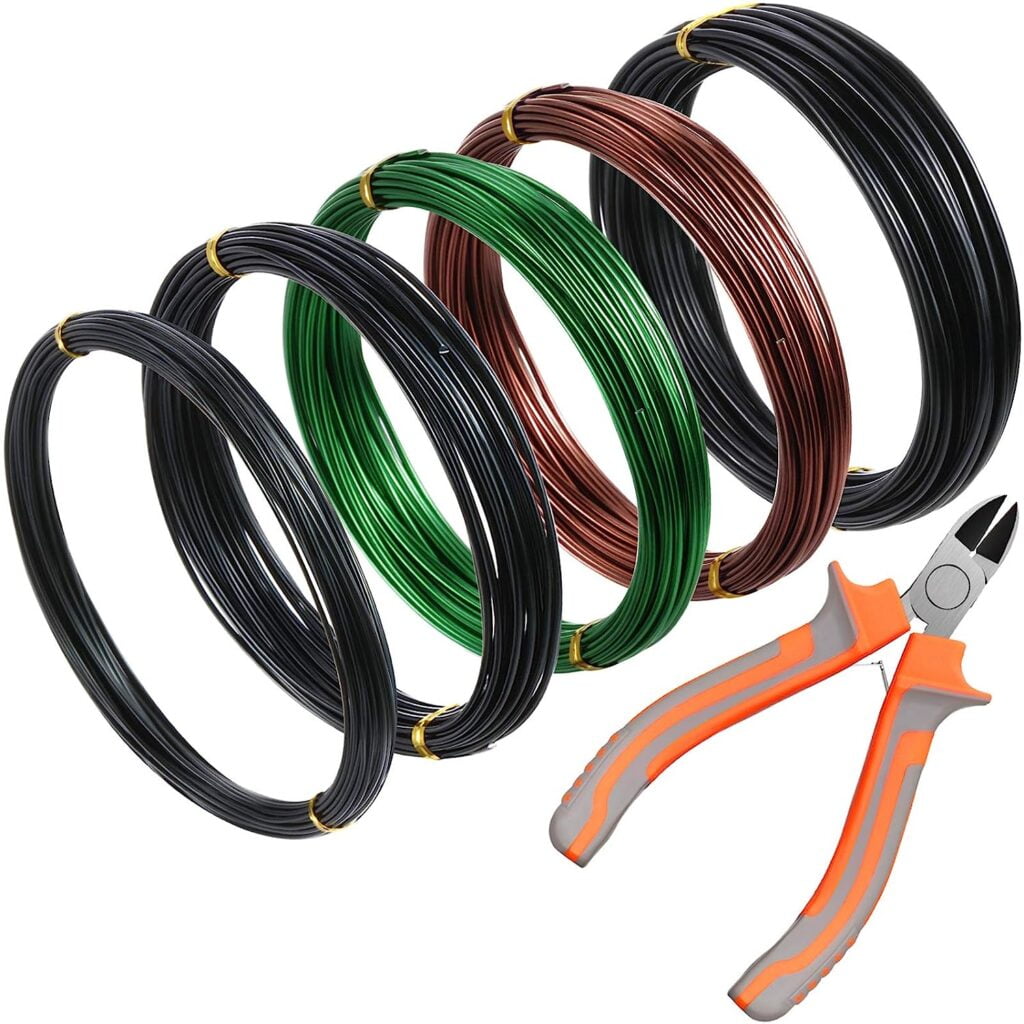Learn the art of maintaining and nurturing weeping willow bonsai with a straightforward care guide. Understand all important tips and techniques of watering, pruning, and shaping along with providing their ideal conditions to make sure your delicate art flaunts its dazzling beauty.
Bonsai and nature lovers both are enchanted by the art of bonsai. Who doesn’t want a piece of nature in miniature form? And among all those bonsai species, one stands out most for its enchanting drama and it is weeping willow bonsai. This tree is significantly known for its drooping stems, leaves, and flowers. But the drama doesn’t end there- the tree changes colors with the seasons. The catkins form in stunning silver color and then turn cream as the tree grows.
In my experience with bonsai for years, I have noticed weeping willow getting more and more popular among bonsai hobbyists. I must say, understanding the tree’s care requirements was a bit struggle at first. But after a year of patience and learning, we have managed to get over that challenging phase and now the tree is growing pretty well.
So that goes without saying, weeping willow bonsai maintenance might seem like a bit hassle prone to a new owner but don’t spoil all your hope, cause in this article I am going to explain the step-by-step process of how to maintain and care of the weeping willow bonsai in an easy tone.
In this article, I’ll be talking about the following aspects of Weeping Willow Bonsai.
- How to water the weeping willow bonsai tree?
- How to re-pot the weeping willow bonsai?
- How to take care of your plant in different seasons?
- How to choose the right weeping willow bonsai?
- How to get rid of common pests, diseases, and other issues on weeping willow plants?
Follow all these thoroughly and you will have a healthy specimen in front of you in no time.
Basic characteristics of weeping willow bonsai
| Characteristic | Description |
| Scientific Name | Salix babylonica |
| Family | Salicaceae |
| Native to | China |
| Tree type | Deciduous tree. |
| Mature height | Upto 60 feet tall |
| Mature width | 30-40 feet. |
| Leaves | lance-shaped, narrow, droopy leaves. |
| Fruits | brown, conical capsules. |
| Flowers | Males and females both produce flowers. |
| Symbolism | Grief and mourning. |
| Maintenance level | Easy to medium. |
Weeping willow bonsai care tips
One fact I have understand clearly after tending my weeping willow is that, this tree is not for forgetful owners, it requires regular care and training as it grows quite fast. Weeping willow requires moderate-level maintenance and is quite sensitive to some atmospheric harshness. So it’s evident that a detailed care guide is needed.
Here’s a quick care guide before we go into details:
- Water: Weeping willow requires plenty of water.
- Humidity: Use a humidity tray to boost the humidity level.
- Temperature: They can tolerate temperatures as low as -46 ℃. The ideal temperature range is 15 to 25 ℃.
- Fertilizer: Refrain nitrogen-rich fertilizer in the growing season.
- Re-potting: Perform springtime re-potting on a weeping willow tree.
- Pruning: Prune the necessary parts in spring and winter.
- Wiring: Try to wire it after pruning when the branches have a bit more clear view.
Watering weeping willow bonsai
Weeping willows are moist-loving plants. In nature, they can be found near a water body like a pond or stream. So it’s clear the same amount of moisture in a container needs to be provided by you.
But I have noticed that watering highly depends on the season and weather of your region and the size of the plant. But there are some general tips that you can keep in mind, following them helped to tend my tree throughout the year regardless of the location I was residing:
- Weeping willow does best when the soil stays moist consistently.
- It can be hard to provide water several times a day during dry spells so you can let the container sit in a bowl filled with water for a few hours.
- Make sure at least the lower half of the soil stays moist all the time. You can insert your finger in the soil to check it or get help from a moisture meter.
- Watering weeping willow bonsai with a fine nozzle can is the best option as the soil won’t wash away and the nozzle will help to cover every corner of the pot.
How much Humidity is needed for Weeping Willow Bonsai?
Weeping willow trees can tolerate dry air but prefers moderate to high humidity. So when growing indoors, they might be weeping internally as indoor air tends to be drier than outside.
But I was growing my plant indoors and avoided the issue by managing my indoor humidity level. Here how;
- You can increase the humidity level near your weeping willow bonsai by placing the pot on a humidity tray and by misting the tree with water from time to time.
- Excessive humidity around them can again cause mildew. Try to circulate air by opening windows during day time.

#Recommended
Best Moisture Meter for House Plants
4-in-1 Soil Moisture Meter ,Digital Plant Temperature/Soil Moisture/PH Meter/Sunlight Intensity/Environment Humidity Meter for Gardening, Farming,and Outdoor Plants
[ 4 in 1 function】This is a 4-in-1 multifunctional soil tester.Our soil tester fastly to measure soil moisture, pH, temperature and sunlight to help you take better care of flowers and plants.You can know when you need to water your soil by measuring moisture and pH & Temperature value of the soil and sunlight level of plants with it.
How much Light and temperature does weeping Willow Bonsai need?
Colder regions with total sun exposure are ideal for the growth of weeping willow. In the southern areas, they require partial or filtered sunlight.
Opt for at least four hours of direct or shaded sunlight every day.
Usually, Weeping willow bonsai loves a moderately warm climate. It will do excellently well under any temperature varying from 75°F to 95°F (23-25 degrees Celsius). If this is the predominant temperature level in your location all through summer and spring, then you can easily develop your Bonsai outdoors.
During winter, you should save your Weeping willow from excessive exposure to freezing temperatures as they can affect the root system heavily.
In my location winter was fine for them to stay outside, but in mid-summer I had to put them far from the window to avoid the harsh heat of the sun.
Best fertilizer for Weeping willow bonsai
Your tree is living in a container, it can’t use its roots to soak up nutrients from deep in the nature, so even though in-ground trees don’t need fertilizer your tree will need it.
The frequency of fertilizer application will totally depend on the fertilizer you are using. It can be weekly, twice a month, or once a month- you need to read the instructions on the packaging to decide.
As a general rule of thumb, use slow-release fertilizer during growing months to boost new twig growth.
Use liquid fertilizer for root growth.
For overall health use potassium enriched fertilizer. A balanced NPK can be used for it too.
If you are aiming for more flower production opt for fertilizer with a higher phosphorus level.
Warning:
Avoid fertilizers with higher nitrogen levels as they focus on upper growth especially larger foliage which is not an appealing look for your weeping willow bonsai.
Weeping willow bonsai potting and re-potting
Ideal pot selection
The most suitable pot for Weeping Willow bonsai is a broad and deep pot that can carry more water. Ensure that these pots should bear adequate drainage because without adequate gaps your tree would be inclined to nutrient lock, root decay, and mildew.
In my opinion, the perfect size of the pot should be about two-thirds the size of the tree. If the height of the willow tree is shorter than its width, the measurement of the pot should be about two-thirds the width of the spread of the tree.
Best soil mixture for re-potting
Weeping Willow bonsai trees require soil that can carry as much moisture as it can. It requires soil that can ably deplete moisture and fertilizer as well. This is very crucial to stop nutrient burn which can impact the absorption of nutrients as well.
I think the superior soil for weeping willow is sandy loam soil. This kind of soil will soak water and nutrients well plus will deplete extra moisture and fertilizer. This also has ideal aeration components which help oxygen to pass through the soil and give the roots a healthy environment.
When to re-pot your weeping willow bonsai?
The roots of the weeping willow grow fast and quickly fill the pot. So if your tree is getting a favorable growing atmosphere, it might need to be re-potted yearly. Try re-potting in spring before new buds show up. New soil and more space from re-potting will give the tree an extra boost of growth during this time.
How to re-pot Weeping Willow Bonsai?
Here’s a step-by-step guide to re-potting weeping willow bonsai;
- Pick a larger container with fair drainage holes. Likewise, to keep the soil from escaping from the holes, shield them with a screen.
- Utilize a root hook or root rake to ease the soil near the bonsai.
- Snip off any ruined, injured, or elongated roots with clean bonsai scissors.
- Now, put new, well-draining soil in the new pot. Place the tree and add more soil near the roots and lightly push down to get rid of any air pockets.
- Then moisten the tree entirely, allowing the excess water to drain out.
- Put the Weeping Willow Bonsai in a shady area for a few days to get used to the situation after re-potting.
Pruning weeping willow bonsai:
The weeping willow is a quick-growing tree, and as a consequence, must be trimmed frequently to keep it healthy and even to be capable of shaping the tree into your preferred style. To prevent having crowded branches and leaves you must prune your tree prior to the growing season.
To prune your weeping willow bonsai tree, employ sharp pruning tools that are sterile to minimize possibilities for infection.
Snip the stems carefully and clear any dead or damaged foliage.
Keep in the sense that it’s okay to cut off any growing ends in order to promote new ones, letting your tree grow healthy and robust.
trimming back all of its branches is a good idea. This will activate the sprouting of new branches and provide the tree with more intensity.
Note:
Unlike my other bonsai tree species, I need to prune my weeping willow two times a year, because the growth was quite heavy.

MADE IN JAPAN 7inch(180mm), Japanese Bonsai Garden Tools, Hasami Pruning Shears
Pros:
- Japanese Garden Tools – Known for the Supreme Quality.
- A must have tool for anyone who is into bonsai or the gardening. You can use any where.
Cons:
- Not easily available everywhere. So you’ll have to buy it online and price goes up and down.
Weeping willow bonsai wiring
Wiring weeping willow bonsai plants is essential because although their leafage normally hangs downward, fresh nodes tend to expand upwards first to attempt to achieve their in-wild height.
Initiate wiring and curving your weeping willow bonsai tree in June to support the nodding twigs in position. But, if you desire to bend mature branches, it’s most suitable to do it when it’s vigorously growing. Using guy wire for this is suitable for better support.
How to wire
Regular wiring:
- Cover the wire around the selected branches. Create a 45-degree bend.
- Along the branch, cover the wire properly. After you’re finished coiling, take pliers to clip the excess.
- Twist and curve the stems gently. Do it slowly so you don’t hurt the plant.
Bending with guy wire:
- It’s straightforward to bring down elevated mature branches with a guy wire. Employing raffia or protective material, cover the branch and attach the end.
- Use a thin wire to anchor the hook. It will bring down the elevated branch.
Notes:
Withdraw the wires in the same season. And monitor how your Weeping Willow bonsai develops after wiring.
Regularly inspect the bonsai wires on your plant several weeks after wiring to avoid wire bits that can provoke unattractive scarring.
Preventing potential pest and disease attacks on weeping willow bonsai
If not treated properly or timely, if the tree is seated in an adverse environment, your weeping willow bonsai tree can get attacked by varied pests and diseases.
Willow borer, aphids, caterpillars, gall makers, spider mites, gall mites, needle rust, or canker can trouble the willow bonsai. I usually place my tree in my balcony in winter and aphids is the prominent culprit I had to bear. I usually put the tree under the sink and run the water, followed by a neem oil spray helped every single time (being vigilant towards my tree helped me not to put my hands on harsh pesticide).
Your weeping willow bonsai also can be cured of pests like a typical willow plant. Keep in mind, your tree is vulnerable in its miniature form and will require a much less and more gentle amount of treatment.
Try natural and manual methods first and if the issue is out of hand use pesticides or fungicides that are specified for them and in more severe issues consult an experienced gardener for guidance.
Extra care tips for different seasons for Willow Bonsai
With approaching seasons you can maintain a specific care for your weeping willow, like;
Springtime care:
During spring they are most active and require a good amount of water for a smooth growing journey. Check the soil dryness at least once a day and never let the soil dry out.
Wintertime care:
During winter they are in their dormant phase and least active. Give it a drink only a few times a week.
After dormancy, you can cut down matured branches and hang twigs.
In the wild, only young trees need protection but as a bonsai, they always require protection from winter gusts. Especially if the tree is staying outside the bundle of roots will freeze to death. It’s more viable to keep them inside during winter nights. A layer of mulch can help to protect the roots from freezing and keep the moisture in the soil a bit longer.
Autumn care:
This time the tree is in its pre-dormancy phase and requires water way less than in summer and spring.
Summertime care:
You need to check your tree at least twice a day for water needs. Other than that you need need to make sure the tree is surrounded by humidity.
Prune the new shoots and use cut paste over big cuts for quick healing.
How to choose the right weeping willow bonsai tree
There are numerous cultivars of weeping willows to choose from. Some have been produced to be shorter, making it more manageable to plant and carry them. Some have been produced to be easygoing in cold temperatures or arider states. Individually all these cultivars can be excellent for Bonsai tree craft and you just need to choose according to your needs.
Some of the most popular cultivars are;
Prairie Cascade Weeping Willow
The leaves on these trees stay radiant, lustrous green throughout spring. In autumn, they turn striking tints of yellow. They do best in areas where they can take at least a few hours of sunshine every day.
White Willow:
White willows are comprehended for their therapeutic. For example, salicylic acid is emanated from this tree. Other than that, as the name suggested white willow has a more delicate appearance than other willows.
Dwarf Weeping Willow:
The miniature size of the dwarf weeping willow makes it perfect for natural Bonsai. Dwarf weeping willows are used to being pruned and can be snipped throughout the year.
Purple Weeping Willow:
They are considerably shorter than most other weeping willows. This makes them excellent for Bonsai trees. The foliage on these trees is a stunning blue-green in color.
Corkscrew Willow:
corkscrew willows are precisely more distinctive than the already unusual weeping willow. The branches on this willow donate to its name. These branches are bent and twisted, resembling a corkscrew.
Niobe Weeping Willow:
Hardiest willow cultivars out there. The leaves of these trees are bright golden, with a hint of green. They can flourish in just about all atmospheres.
Best Weeping Willow Bonsai for Sale
What are the common issues weeping willow bonsai face and how to fix them?
Weeping willows are not typically effortless trees to tend, they can encounter a few growing issues as well. Issues are generally associated with inappropriate drainage or vulnerability to sunlight.
Crispy Leaves:
Weeping willows with crispy and brittle leaves are commonly influenced by water problems. In this matter, the trees naturally require more moisture after being revealed to too much daylight or burning temperatures. Supplement the tree with more watering.
Yellow leaves:
If the leaves on your weeping willow bonsai tree are turning yellow gradually, the tree probably is acquiring too much or too small amount of water. Check the soil dryness, and try to bend the leaves, if it snaps easily in half then you need to increase the water amount, and if the yellow leaves get heavy and fall prematurely meaning they are overwatered.
Conclusion:
You can have little or expert-level knowledge about bonsai, if you follow the guide and provide it to your tree as such, the results will be rewarding. By maintaining moisture, soil, and temperature needs and applying re-potting and pruning methods, the beauty and drama will unveil.





